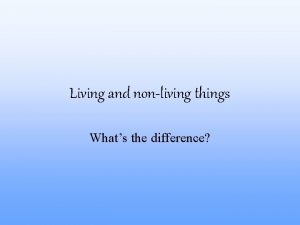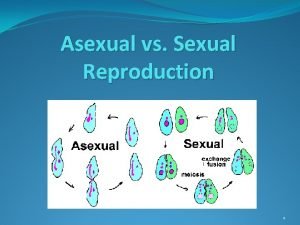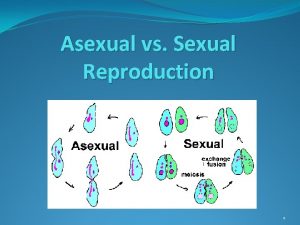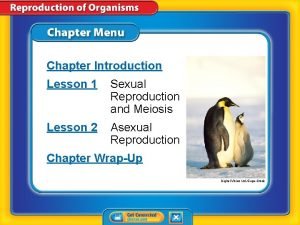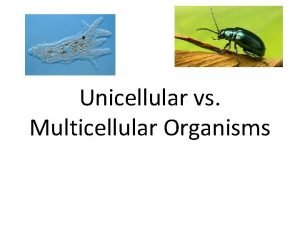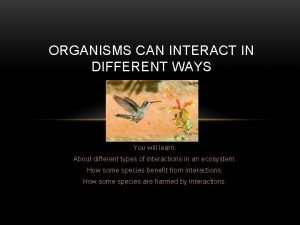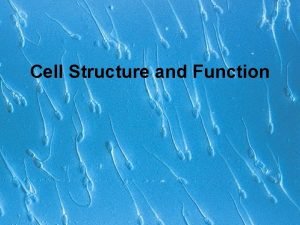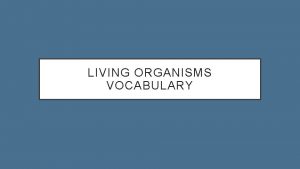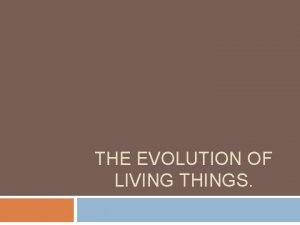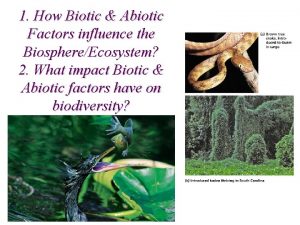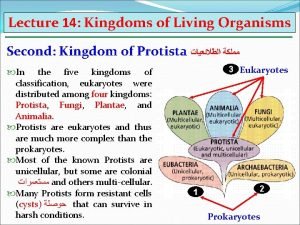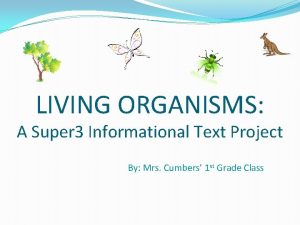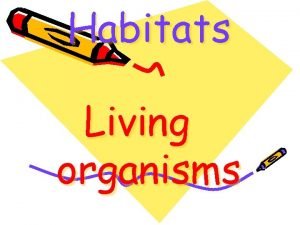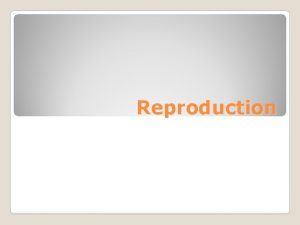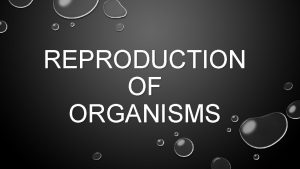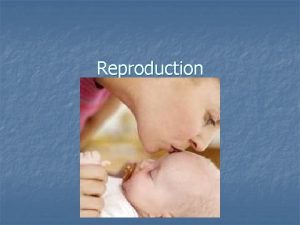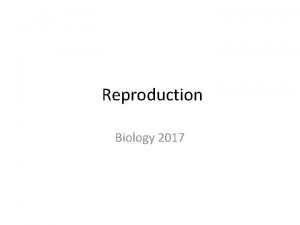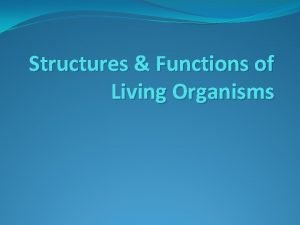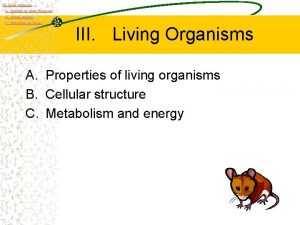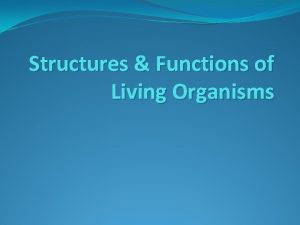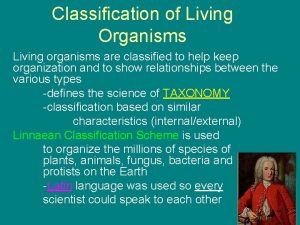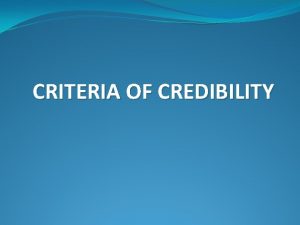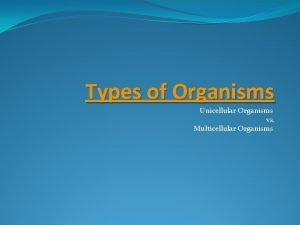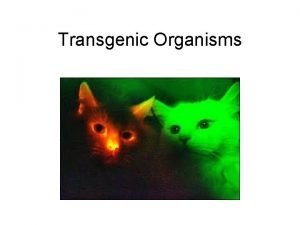Reproduction of Living Organisms Success Criteria Students will


















- Slides: 18

Reproduction of Living Organisms

Success Criteria • Students will become familiar with the human reproductive processes from the menstrual cycle to birth. • Students will describe the development of a pre-born human from the zygote stage up to fetus stage. • Students will be able to choose methods of contraception and protection from Sexually Transmitted Infections (STIs).

The Menstrual Cycle (p. 265) • About 28 days from beginning to end. The lining of the uterus changes thickness over the cycle. A thicker lining helps a fertilized ovum (zygote) stick to the uterus and begin development. • Day 1: Menstruation (period) • The unfertilized ovum is shed • Day 8: Follicles begin developing the ovum and the lining of the uterus starts to thicken. The ovum may be fertilized in the ovaries.

The Menstrual Cycle (p. 265) • Day 13: Ovulation • Ovum is in the fallopian tubes. Best time for fertilization. Body temperature increased by about 0. 5 OC. • Day 24: Lining of the uterus is at its thickest point. Ovum is reaching the end of the fallopian tubes. • Day 26: Unfertilized ovum dies in the uterus.

Pregnancy (p. 266) • Several million male gametes (sperm) are deposited into the vagina. • The sperm swim towards the uterus, then the fallopian tubes. • Only several thousand will reach the ovum, and only a single sperm will fertilize the ovum. • Fertilization may occur in the ovaries or the fallopian tubes; rarely in the uterus.

Pregnancy (p. 266) • Fertilization: The moment a sperm enters the ovum, it is a zygote. A single-celled living thing with a full set of genes. • Cell division: occurs in the fallopian tubes, doubling the number of cells up to 16 cells. • Implantation in the uterus: The zygote is now an embryoblast and attaches to the thick lining of the uterus.

Embryo and Placenta • After 10 -14 days, the embryoblast has developed into an embryo. • The embryo needs protection and food, much like a plant seed. • Protection: Amniotic sac contains the embryo and amniotic fluid • Food: Placenta carries nutrients and oxygen from the mother through the umbilical cord.

Embryo to Fetus • Pregnancy is divided into three stages called trimesters • First Trimester (Week 1 -13) • • Placenta develops Week 4, 1 cm, brain, heart, limbs and eyes begin to form. Heart beats. Week 8, 3 cm, embryo is now a fetus. Bone cells develop. Week 12, 8 -10 cm, sex can be determined, fetus can move.

Embryo to Fetus • Pregnancy is divided into three stages called trimesters • Second Trimester (Week 14 -26) • Week 16, 16 cm, skeleton forms, most organs present. • Week 20, 25 -30 cm, hair forms, sounds heard. • Week 24, 27 -35 cm, lungs have formed but cannot be used on their own.

Embryo to Fetus • Pregnancy is divided into three stages called trimesters • Third Trimester (Week 27 -40) • • The fetus grows rapidly and requires many nutrients from the mother. Week 28, 38 cm, fetus can open eyes. Week 32, 42 cm, settles into a head down position, optimal for birth. Week 36, 50 cm, recognizes its mother’s voice.

Dangers to the fetus • All nutrients come from the mother’s blood. Harmful substances in the blood stream will reach the fetus and may cause malformations. • Cigarette smoke limits oxygen, prevents growth and organ development. • Alcohol affects the brain, nervous system, and physical development. Leads to Fetal Alcohol Syndrome (FAS). • Drugs, both legal and illegal, can cause malformations or mental illness. Always consult a doctor before taking drugs while pregnant.

Birth • The pituitary gland, arguably, causes pregnancy. Now it will end the pregnancy. • The pituitary gland produces a hormone called oxytocin which stimulates contractions of the uterus, causing labour (the birthing process).

Contraception (p. 276 -p. 277) • If pregnancy doesn’t appeal to you, there are ways to prevent it without ceasing sexual intercourse with the opposite sex. • We can either stop the sperm from reaching the ovum, or stop the zygote from implanting in the uterus.

Contraception (p. 276 -p. 277) • Prevent fertilization • Billings method and Basal body temperature method are quite risky and prone to error. • Female condoms, Diaphragms, Spermicides, Oral contraceptives, Birth control patches • None of these methods are 100% effective, but condoms and oral contraceptives are 99. 99% effective.

Contraception (p. 276 -p. 277) • Prevent fertilization • There are surgical options to prevent fertilization • Expensive, but 100% effective • Tubal ligation, Visectomy

Contraception (p. 276 -p. 277) • Prevent implantation • Intrauterine Device (IUD) • Highly effective, but must be installed by a healthcare provider • May cause infections in women who have not had children before

Sexually Transmitted Infections • Condoms are the most popular form of contraception because they also are effective at preventing STIs • No other contraception method can prevent STIs • Medical gloves and denture dams are also effective against STIs (for hands and mouths, not genitals)

Sexually Transmitted Infections • STIs are extremely contagious and can be passed through blood, semen, or vaginal fluid. • AIDS, Condyloma, and Genital Herpes are not curable and will stay with the infected for the reminder of their lives. • AIDS patients risk shortening their lifespan by 10 -20 years if they do not receive regular treatment. • For these reasons, condoms should always be used during sexual intercourse. Couples must be tested for infection before having unprotected sex.
 Venn diagram of living things and nonliving things
Venn diagram of living things and nonliving things Success criteria examples
Success criteria examples Sexual and asexual reproduction venn diagram
Sexual and asexual reproduction venn diagram Hare lynx
Hare lynx Venn diagram of sexual and asexual reproduction in animals
Venn diagram of sexual and asexual reproduction in animals Connecting the concepts sexual reproduction
Connecting the concepts sexual reproduction Examples of sexual reproduction
Examples of sexual reproduction Multi and unicellular organisms
Multi and unicellular organisms Why do organisms interact with other organisms
Why do organisms interact with other organisms Your child's success or lack of success
Your child's success or lack of success Your child's success or lack of success
Your child's success or lack of success Small living organisms
Small living organisms The smallest living unit within the human body is
The smallest living unit within the human body is What is the smallest unit of living organisms
What is the smallest unit of living organisms Which principle
Which principle Evolution of living organisms
Evolution of living organisms 5 levels of organisms
5 levels of organisms Kingdom protists
Kingdom protists Living organisms
Living organisms
